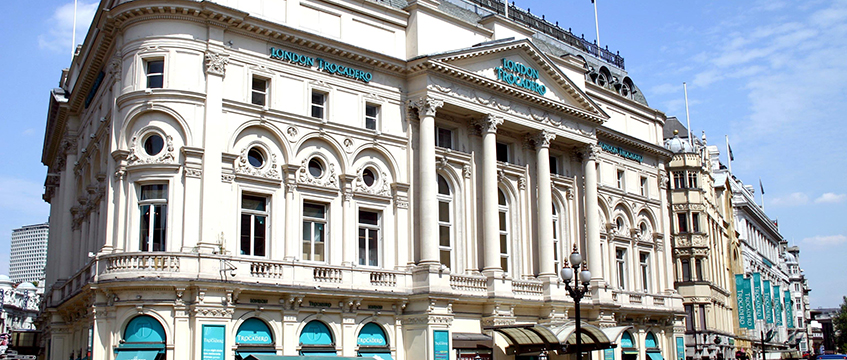Peter Evans
Regular statistics from the Government give some idea as to the pattern of institutional investment. They have, over the years, provided a useful insight into the policies of insurance company and pension fund managers, albeit on an historic and somewhat generalised basis. Several commentators have questioned the accuracy of these figures, although in these times of Government cutbacks we should all be grateful that this is one source of statistics which has so far been immune from pruning!
But the statistics tell only part of the story and, most important of all, fail to indicate the future direction of institutional investment. All advisers have their own theories, but there appeared to be real merit in examining the intentions of those who are directly responsible for institutional investment decisions — the fund managers. Taking this concept on board, accordingly, we undertook a detailed survey of institutional investors.
Detailed replies were received from funds with a property portfolio value of £6,600m — about 20% of total institutional property holdings. Three broad areas were investigated:
(1) the structure of institutional property holdings;
(2) relative performance of property; and
(3) future investment intentions.
Portfolio structure
Each fund provided a breakdown according to location and use of its property holdings and the extent of its overseas properties. We had collected similar information in surveys in 1980 and 1983.
Location
The South East, South West and East Anglia accounted for over three-quarters of holdings, unchanged from the levels in both 1980 and 1983. Within London the difference in the distribution of holdings between insurance companies and pension funds was very marked. While the former had the bulk of their London portfolio in the City (40%) the pension funds were concentrated in the remaining inner-London belt (67%). Suburban London holdings represented around 31% of pension fund holdings, while for insurance companies the figure was 24%.
After London, the remainder of the South East has been the most favoured area for institutional investment; for example, pension fund holdings in the region, as a share of total holdings, have risen by around 20% since 1980. Smaller pension funds with portfolios below £100m are heavily invested in the South East, particularly those who have only very limited London investments. For around half of these, the South East (excluding London) accounts for over 40% of their portfolios, while for the larger funds, holdings are around 30%. The other southern regions, East Anglia and the South West, show varying fortunes; the former’s share has fallen, while the South West continues to account for 6% of total holdings. The decline in East Anglia’s relative standing may be due to changes in agricultural holdings.
The remainder of the country accounts for less than a quarter of funds’ holdings. This low weighting in part highlights the disparity in the geography of commercial property wealth in the UK. However, using rateable value of commercial floorspace as a surrogate measure for investment opportunity, the selective nature of institutional property can be clearly seen. In regions such as Yorkshire, Humberside and the North, the distribution of institutional holdings is roughly equivalent to half that for the rating statistics, while in the West Midlands it is only one-third. Given the weakness of the accommodation market in most of those regions since 1980, however, it is surprising that holdings have remained steady rather than falling.
Use
The sector composition of institutional portfolios has undergone extensive change over the last five years. Our surveys revealed a shift by pension funds from industrial and office holdings to shops, but since 1983 the pace of change has quickened substantially. Pension fund holdings of office properties have fallen from levels of over 50% in the early 1980s to just 44% in 1985.
Industrial property’s standing has followed the same trend although the extent of the decrease is much greater; this sector has lost around one quarter of its share of pension fund portfolios over the last two years. Shop properties have seen a sharp rise in their share and now account for more than double the value of industrials.
These substantial shifts in the structure of institutional portfolios have occurred during a period of reduced property investment and rapidly rising property sales; in part they reflect the relative changes in values between the main uses. To achieve the level of change evident from our survey, sales of property have been concentrated on offices and, more particularly, industrial premises. The extent of the reorganisation of portfolios is likely to have been more marked in the provinces than in London, given the capital’s concentration on office premises.
Property performance
Performance has been the critical issue behind the movement in institutional property investment over the last two to three years. For this reason the survey sought to evaluate its impact on individual funds and for the sector as a whole. Fund managers have faced the performance question on two fronts — rental growth suppressed as a result of the recession, and a widening gap between the returns available from the equity markets and those from their property portfolios.
The contrast between “above” and “below target” performance in our survey was stark. Only around one-tenth rated their returns over the last two to three years above target, compared with 50% for whom performance was below target. Very few funds actually placed their performance at the extremes, ie either very high or well below target. Lying in the middle ground were 37% of the funds for whom performance was on target, although this may not necessarily imply a satisfactory result. To borrow the words of one respondent: “We did not expect very good performance and we did not get it.”
Investment levels
Among the funds surveyed, current investment in property usually exceeds 10% of the fund’s total investment activity. The strong link noted in our earlier research work between the size of a fund’s property holdings and its annual investment level is marked. The smaller funds maintain a limited commitment with the majority placing less than 10% of investment money into property; in contrast, a high proportion of large funds invest more than 20%. Funds disinvesting or freezing new money for property made up just 13% of the sample and were drawn predominantly from those with less than £50m invested in property holdings.
Current property investment levels represent a significant reduction from those prevailing at the beginning of the 1980s: for nearly half of the funds the recent investment trend has been one of decline. More importantly, it has been the large funds with their higher level of commitment to property which reported a widespread downturn. For funds with property portfolios of over £50m, only 18% have increased their rate of commitment, while half of the smaller funds reported an increase. Not surprisingly, where performance has failed to meet expectations, the investment trend of around two-thirds of respondents has been one of reduction.
Performance outlook
It follows from these results that if the institutional property investment market is to strengthen, performance must show a significant improvement. To shed some light on expectations for such a recovery, fund managers were asked to assess the likely future level of performance.
Projections of performance revealed a strong optimism for a rise in overall returns. This was most apparent for those respondents whose performance to 1985 was below target; for this group over 90% expected an improvement. Justification for such a change tended to centre on two factors: an upturn in rental growth and portfolio restructuring. While external influences, such as the economy, are seen to play an important part in future performance, it is significant that the majority see the improvement as being self-generated.
To weigh this optimism in the context of the broader investment market, fund managers were asked to rate the returns they expected for property against other investment media. The results indicate that the relative standing of property is expected to be significantly better than in the recent past. Indeed, three-quarters believed that overall returns for property will equal or exceed those for the equity market.
Sector performance
The future performance of a range of property sectors was assessed, covering traditional as well as more innovative forms of accommodation. The consensus is that shops will provide the best results, with out-of-town retailing and retail warehouses the most highly favoured among retail property. Most respondents do not expect High Street shops to improve upon their strong performance in recent years, although a significant minority expect still further growth. The results for the various other classes are mixed, with prime City offices widely forecast to give higher returns, while other inner-London offices were considered unlikely to exhibit any departure from current performance. Offices in provincial locations are one of the lowest-rated property sectors with a clear majority envisaging a fall in returns.
A recovery for standard industrial premises is considered likely by only around one-third, but even fewer expect improved growth rates for hi-tech space, which suggests the early spectacular returns have passed and the market is now more evenly balanced. Campus offices received a similar neutral weighting.
Overall the survey suggested that a significant improvement is expected. Positive indicators are both the higher expectations most fund managers hold for their own fund’s performance, as well as the comparatively favourable position projected for property in the total investment market. When taken to the level of growth by property type, however, the degree of optimism is somewhat tempered by the narrow band of properties which carry a general endorsement of higher returns.
Future investment policy
Funds were asked to outline their future intentions for property investment, both in terms of providing a broad estimate of the level of new investment over the next two to three years and the changes proposed to portfolio structure.
A significant turnaround from the low level of investment in property seen over the recent past does not appear likely, given the responses on future investment levels. Although the number of funds planning to increase investments was almost as great as those intending to reduce their commitment, the concentration of large funds in the latter group means that, in cash terms, these will have the greatest impact. Half the larger funds propose to reduce their investment, while only 14% intend raising their commitment. In contrast, nearly half of funds with small property portfolios plan to increase their commitment against around 30% proposing a reduction or actual disinvestment. For most funds, property investment will continue at the same level over 1986-88 as it did during the previous two years.
Portfolio changes
A continuation of significant modifications to property portfolios looks likely, although very few funds could clearly define potential changes in terms of locational shifts. Sector changes, however, could be identified more positively: shops remain the favoured property type with 56% of funds planning to increase their commitment.
Industrial properties appear likely to bear the brunt of portfolio reductions over the next few years. They recorded the largest level of disinvestment, although in comparison to our earlier surveys the pace of cutback will not be so severe.
Since industrial holdings in institutional portfolios have already been extensively reduced, the room for further cuts is, of course, more limited.
The net movement in office holdings is unlikely to match the degree of change for the other sectors. The majority specified no expected change, although the proportion proposing to increase office purchases has risen since 1983, with a considerably lower percentage planning a cutback. Since offices usually form the largest element in individual portfolios, plans by funds to reduce their overall exposure to property would fall heavily on this sector. A cross-analysis of investment intentions up to 1989 with portfolio changes supports this view. Two-thirds of the funds cutting their overall commitment were also reducing their exposure to offices.
Direct development
While in the past many of the changes to institutional portfolios highlighted above would have been through the purchase of established investments, funds are now increasingly involved in the direct development of buildings. The extent of this activity has been widespread; around two-thirds of funds surveyed had been engaged in direct development of some form, either in partnership or solely. Funds with large property portfolios are naturally more willing to take on the developer’s role and around 90% of funds with holdings of over £100m had undertaken one or more developments over recent years, while, for funds with portfolios of less than £50m, 59% had no such involvement.
Future developments
Only around one-fifth of those who had previously carried out direct development stated a clear intention to withdraw from this activity. Reasons cited included their cutback in the overall commitment to property, the level of risk, and the ready supply of existing properties. Only one fund gave “disappointing results” as the reason for halting direct development.
Retail and office schemes will again account for a considerable share of development, but with a substantially higher weighting in favour of the former. New shop development, which in this survey includes retail warehouses, is proposed by 70% of funds. This reflects the earlier results of future performance which found out-of-town retail units and retail warehouses to be the top categories in terms of future performance. Hi-tech developments have also gained in popularity, and whereas previously this was limited to the larger funds, future intentions show a far broader coverage.
Conclusions
The first half of this decade has proved to be a testing period for the property market: the economic recession has cut into tenant demand, and more recently there has been a large performance gap between property and other investment media. These challenges have been a watershed for investors — not only has the commitment to property changed, but the behaviour of investors has also altered considerably. The most obvious signs from our survey of these adjustments have been the cutbacks in commitment to property and a shift in portfolio balance towards those sectors where returns have been strongest. For the last few years this has been primarily shops. Funds have clearly changed from being merely hoarders of land and buildings to more active traders in the market.
The future scenario for the institutional property market is one of a continuing cautious approach to property investment. Those funds with sizeable property holdings stated a clear reluctance to raise their commitment. Given the dominance of the market by this group a substantial turnaround in property investment appears unlikely. A further decline in property’s cash flow, however, is also unlikely; from the responses given it can generally be concluded that the status of property among institutional investments has steadied. Obviously much will depend on the scale and depth of the improvement for property’s performance. If this is concentrated on just a few sectors — as many in our survey expect — institutional investment opportunities will be limited. If, however, there should be a significant recovery in most sectors and in locations outside the South East, a turnaround in property’s share of investment could come about. The latter, however, will have to await further change in that most strategic of issues — the economy.









